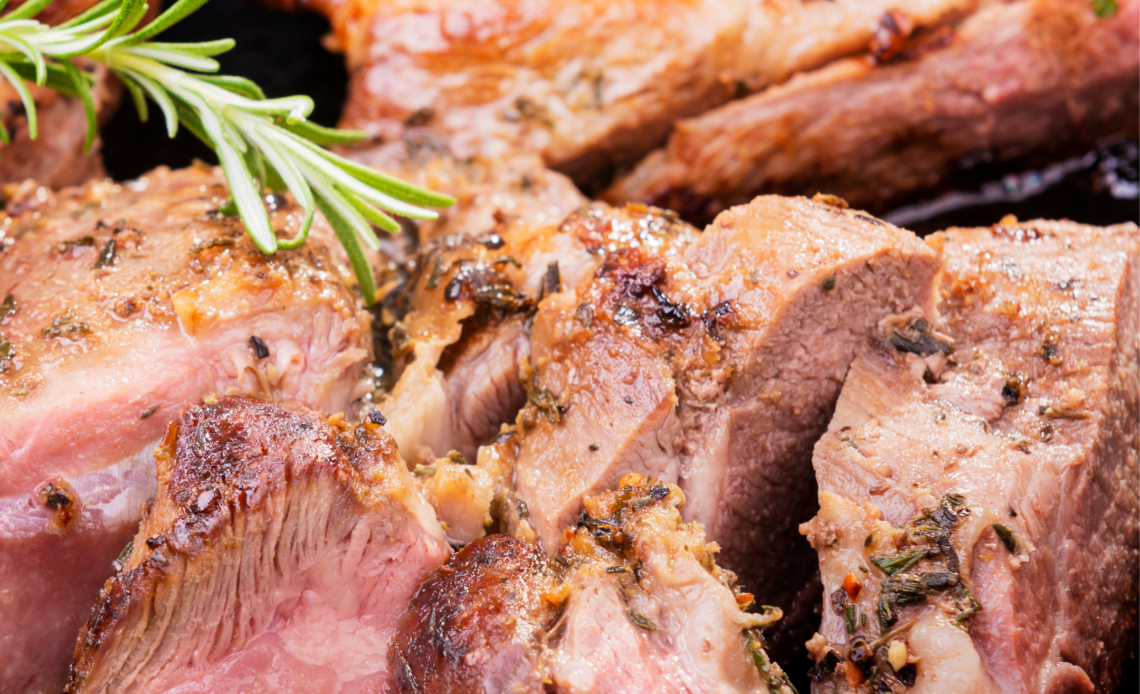
The leg of lamb is a classic. 3 hour shoulders are great. But to make the juiciest roast he lamb of his life, he slow-cooks it overnight in the oven for 12 hours. With ultra-low temperature cooking with plenty of broth, you don’t have to worry about forgetting to set it. This completely user-friendly and simple method of cooking is 100% fully reheated and gives great results with the bonus of cooking up to 4 shoulders at a time.
This is a reader favorite recipe, and by popular request, has been included in my debut cookbook, Dinner!.

What’s so amazing about a 12 hour lamb, anyway?
Three-hour slow-roasted lamb shoulder stuffed with garlic and rosemary, this wonderful dish has many loyal fans. And there’s always a place in my life for something to pop right in the oven for dinner on a lazy Sunday afternoon, 3 Hour Lamb. Because it’s even better. See, it’s a bit like flying. Think of his 3 hours of rum like business class. It’s pretty great and no one on the receiving end is going to complain…but 12 Hour Lamb is next level, top of the shelf, top notch. And when you ride first class, it’s hard to see anything else the same!
12 Hour Lamb is special because:
- Lower temp = more succulent meat – Tough cuts like lamb shoulder need slow-cooking to tenderise them. The lower the roasting temperature, the less total moisture evaporation and thus juicier meat. 3-hour lamb is cooked at 180°C/350°F, while the 12 hour lamb is cooked at only 100°C/212°F.
- Better flavour – Not only is the flesh juicier but the slow braising-roasting method here means you get the best of both worlds: flavour infused into the flesh from the surface rub and lamb juices which mingles with the braising liquid, and surface browning you can only get with roasting.
- Hands-off overnight cooking – Covered, with plenty of braising liquid to keep it moist, our first class lamb cooks overnight on autopilot. No basting, no removing covering to brown, no tray rotations – it completely takes care of itself. Wake up the next day and be greeted with roasted meat perfection!
- Easy to scale up – Make 2 at the same time in one pan, or 4 across 2 pans!
- Reheats 100% perfectly – Unlike many other roasts, this 12-hour slow-roasted lamb shoulder reheats 100% perfectly, which makes it an excellent make-ahead centrepiece for large gatherings.
- It creates its own jus (fancy word but it’s dead easy) – It’s just the braising liquid, simmered to concentrate and thickened slightly with cornflour/cornstarch. After 12-hours with the lamb, this is flavour-packed liquid gold!
- A ludicrous effort-to-reward ratio – I am a VERY big fan of recipes where you reap high rewards for a small outlay of effort!
What you need to make 12-hour slow-roasted lamb shoulder
Here I chose the classic flavors that lamb loves: Rosemary and Garlic. Slow roast made simple! (Note: the dried oregano is missing from the photo, oops!)
- Lamb shoulder – The more economical yet superior brother to lamb leg (in my humble opinion). It’s richer, it’s got more flavour, it’s juicer, and it’s far more forgiving to cook than lamb leg. Leg either needs to be roasted to blushing pink perfection or slow-roasted to fall-apart tenderness (but because it’s leaner there’s less margin for error with the cook time).Shoulders are widely available these days in Australia, even at large grocery stores (Coles, Woolies etc). They are typically around 1.3 – 1.6kg (young lambs with more tender flesh) but sometimes you will find them as large as 2kg+ which are still terrific, but the flesh is a wee bit less tender (because they are older animals).
- Garlic, oregano (missing from photo, oops!) and rosemary – Timeless companions to lamb!
- Onion – To keep the lamb slightly elevated off the base (instead of using a rack) and also to flavour the sauce (lamb jus) which we make using the braising liquid.
- Olive oil – For rubbing the lamb so the salt, pepper, garlic and rosemary stick.
- Water – Plenty here, and there’s a few reasons for this. Firstly, for moisture retention in the flesh during the slow-roasting period. Secondly, it promotes more even cooking of the flesh because partially braising in a liquid distributes heat more effectively than the convective heat of oven air (ie. just dry roasting). Thirdly, to prevent the pan drying out which would result in the pan base residues burning. And lastly, the water becomes heavily flavoured with lamb juices, which we then reduce to make the sauce. There’s absolutely no need to use stock!
How to make 12-hour lamb shoulder
- Marinade / rub – Mix the rosemary, garlic, salt and pepper with the olive oil.
- Slather then optional marinade – Slather the rub all over the lamb shoulder, being sure to get right into all those cracks and crevices! I just do this straight in the roasting pan – why bother dirtying a cutting board??Then if time permits, leave the lamb to marinate for 2 hours on the counter in the roasting pan, or up to 24 hours in the fridge.Marinating is an optional step. Why? Because the long and slow cook time means the lamb is essentially marinating as it cooks, in my opinion. But I’m sure people with a more refined palate than me can probably taste the difference between marinating, and not. I can’t. So I usually skip the marinating time.
- Water – Pop the onion wedges under the lamb (I promise they are hidden under the lamb shown above!) then pour the water into the pan.
- Brown 45 minutes – Pop the lamb in the oven for 45 minutes, uncovered. This is to give the browning a head start. It will brown further when covered in foil, but this just ensures our finished produce is really nicely browned. It’s easier and better to do this first than at the end when it’s already cooked.
- 12 hours in oven – Cover lamb with baking paper then two layers of foil, sealed tightly (or better yet, a heavy roasting pan lid) to prevent evaporating moisture leakage. We want all of it to stay locked in! Then place in the oven for 12 hours at 100°C/212°F. Now go to bed and sleep well, relaxed by the knowledge that your lamb will turn out beautifully tomorrow.
- Fall-apart meat and LOTS of liquid! When the lamb emerges from the oven in the morning, the flesh should pry apart with very little effort (check the side, not top, to preserve presentation). The pan will have even MORE liquid than it started with because of all the lamb juices. See? No risk of a dry pan burning!
This slow-roasted lamb sauce is an intense flavor marvel packed with all the savory and meaty goodness you can only get from 12 hours of slow cooking! It’s made from gravy reductions rather than scraps, so it’s a kind of juice. Here, you don’t have to wrestle with a skillet on the stove and make a roux out of the fat in the skillet. Instead, boil down the sauce in the pot to thicken it and lightly thicken it with cornmeal/cornstarch so that it coats the meat nicely when poured.
HOW TO MAKE LAMB JUS
- Reduce pan juices – Remove the lamb to a platter, another roasting pan or a large container. Then strain all the pan juices into a saucepan. Simmer rapidly to reduce to 1 cup.
- Thicken with cornflour – Make a cornflour slurry by mixing 1 teaspoon of cornflour with 1/4 cup of water. Pour that straight into the saucepan while stirring. At first it will make the liquid murky, but as it comes up to the boil it will become shiny and clear, and will thicken slightly. We do not want the jus to be too thick – not like our usual gravy that we serve with roasts. A jus is supposed to be thinner. This is because it looks and pours more elegantly than a more viscous gravy. Also because it typically has more intense savoury flavour than gravy, you use less. So we want the sauce to run more readily so it coats the meat more thinly than gravy (in, say, the 3-hour lamb shoulder).Once the jus is ready, pour into a jug and serve alongside the lamb. It can be made days in advance, stored in a container and reheated simply in the microwave or on the stove.
A go-to main for gatherings
As I mentioned right at the beginning, some of the reasons this has become my go-to centrepiece for a a group menu is because:
- It’s easy to scale up (up to 4 shoulders in one oven)
- It’s pretty much entirely hands-off
- It can be made ahead the night before, and reheats 100% perfectly
So I thought it would be helpful to also share my typical game plan for cooking a roast, including a schedule based on when and how to serve the roast.
What to serve with 12 hour roast lamb
The lemon Greek potatoes pictured above pair perfectly with this Mediterranean lamb. Also peeking out from the bottom corner is a large, juicy Greek salad that makes a fresh side dish that complements the richness of the lamb.
A large pot of roasted vegetables with herbs and garlic is also ideal. Lamb stays warm for hours after it comes out of the oven, so you can cook it.
Serve with duck fat potatoes for an indulgent option. For veggies, a big bowl of Wednesday garlic sautéed green beans is ideal!
That’s it! What do you think? Persuaded to try? There’s no easy way to top this off with the ULTIMATE Roast Lamb! I truly believe this is the best way to roast lamb for the best results, and I’ve also included some of his lamb recipes, which you can see below.


